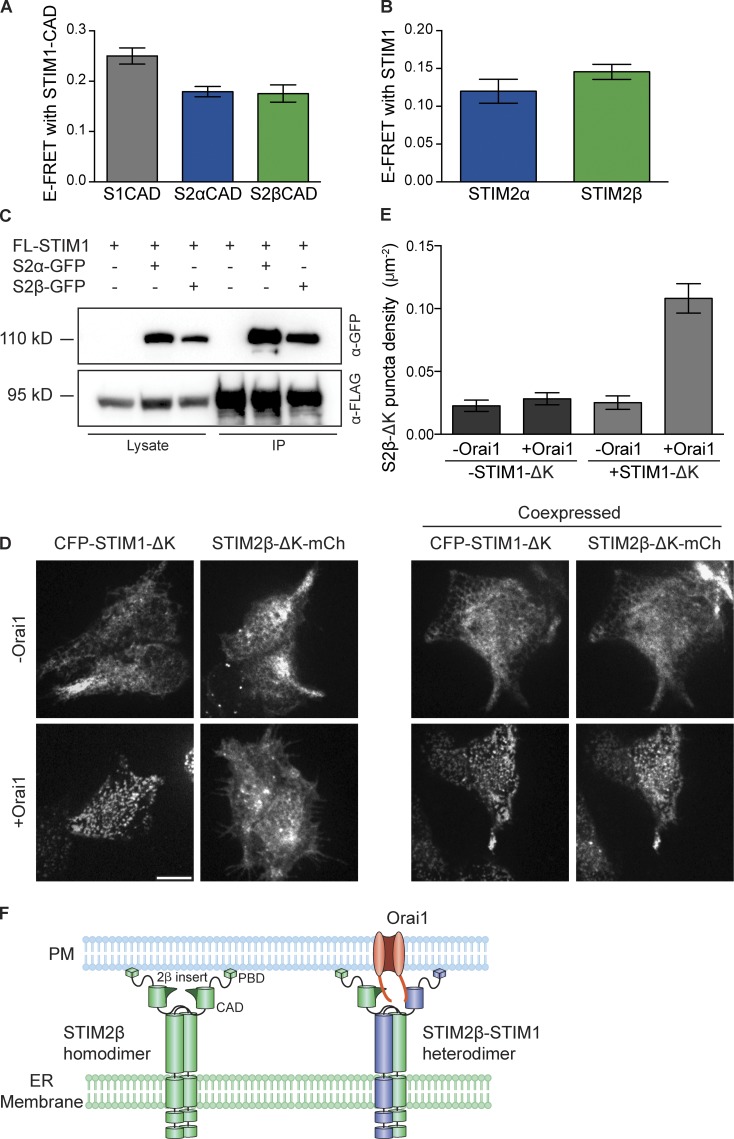Figure 6.
Heterodimerization with STIM1 tethers STIM2β to Orai1. (A and B) FRET in cells coexpressing CFP-STIM1-CAD with YFP-STIM2α-CAD or YFP-STIM2β-CAD (A), or STIM1-YFP with STIM2α-CFP or STIM2β-CFP (B). Both STIM2 isoforms as well as their CADs interact with STIM1 (n > 17 cells for each bar, P > 0.1 for each comparison, Mann–Whitney test). (C) STIM2α- or STIM2β-GFP coimmunoprecipitate to a similar extent with FLAG-STIM1 (FL-STIM1). IP, immunoprecipitation. (D) STIM1-ΔK can tether STIM2β-ΔK to Orai1 channels. (left) In store-depleted cells, STIM1-ΔK forms puncta only in the presence of Orai1, whereas STIM2β-ΔK cannot form puncta even when Orai1 is coexpressed. (right) However, coexpression of STIM1-ΔK is sufficient to recruit STIM2β-ΔK to puncta in store-depleted cells expressing Orai1. Bar, 10 µm. (E) Comparison of puncta formation by STIM2β-ΔK from experiments like those in D (n ≥ 10 cells for each bar). Significant puncta above background are formed only upon coexpression of Orai1 and STIM1-ΔK (P < 0.0001, one-way analysis of variance). (F) Model of STIM2β tethering to Orai1 through heterodimerization with STIM1. STIM2β homodimers accumulate at ER–PM junctions through interactions of the polybasic domain with the PM (left) but do not interact strongly with Orai1. STIM2β-STIM1 heterodimers can bring STIM2β into close proximity to Orai1 through STIM1-mediated binding to the Orai1 C terminus. PBD, polybasic domain. Error bars show means ± SEM.

